Stay connected
Subscribe to our fleet blog and follow us on social media to receive all our fuel and energy industry insights.
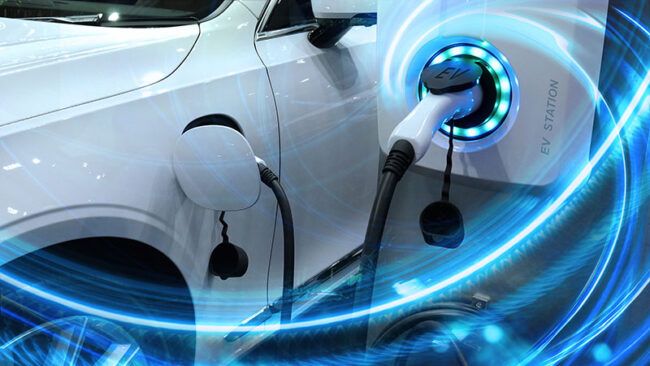
Electric vehicle (EV) demand has steadily risen in the U.S., with total EV registrations up from 280,000 vehicles in 2016 to a total of 2.4 million in 2022. The EV market also saw year-over-year growth of 68% between 2021 and 2022.
A recent study by business consulting firm Frost & Sullivan, commissioned by WEX, highlights strong plans for increased EV adoption. This is among commercial fleets that already operate a mix of internal combustion engine (ICE) and electric vehicles (EVs). According to the survey, 80% of these fleet operators plan to electrify at least 25% of their fleet by 2030. Additionally, nearly 50% expect EVs will make up half or more of their fleet by the same time.
Read on to explore more EV research and download the white paper, “The Commercial EV Transition: Global Insights on a Mixed-Energy Fleet Future.”

Learn global insights on the transition to a mixed-energy fleet future
Electric vehicles can help improve a company’s fuel economy, lower fuel costs, and reduce emissions. This leads more and more businesses toward embracing the global sustainability movement.
“Decarbonization has become a top priority for organizations of all sizes, and transitioning toward mixed-energy fleets is one effective way to achieve that. Fleet managers aren’t debating if they should go electric; they’re figuring out the best way to integrate EVs and ICE vehicles,” shares Carlos Carriedo, Chief Operating Officer, Americas Payments & Mobility at WEX.
Car manufacturers are also leading the movement toward greater sustainability. General Motors, for example, plans to stop selling new gasoline-powered cars and light trucks by 2035. Volvo plans to introduce an all-electric lineup by 2030. Stellantis, the umbrella company behind Chrysler, Dodge, Fiat, and Jeep, also pledged to have half of its North American sales be electric vehicles by 2030.
EV adoption can help businesses align with environmental goals, meet policy demands for zero-emission transportation, and appeal to eco-conscious customers. However, the path to electrification isn’t without its challenges. Typically higher upfront costs than those of ICE vehicles, infrastructure concerns, and varying adoption rates across companies and governments all play a role.
To better understand the commercial EV adoption landscape, the researchers who conducted the study surveyed more than 500 commercial mixed-energy fleet operators. The survey was conducted across Europe, North America, and Asia-Pacific. Subjects’ fleets ranged in size from two to 500+, and each had at least one EV in their inventory.
These findings highlight four key trends driving the shift to mixed-energy fleets:
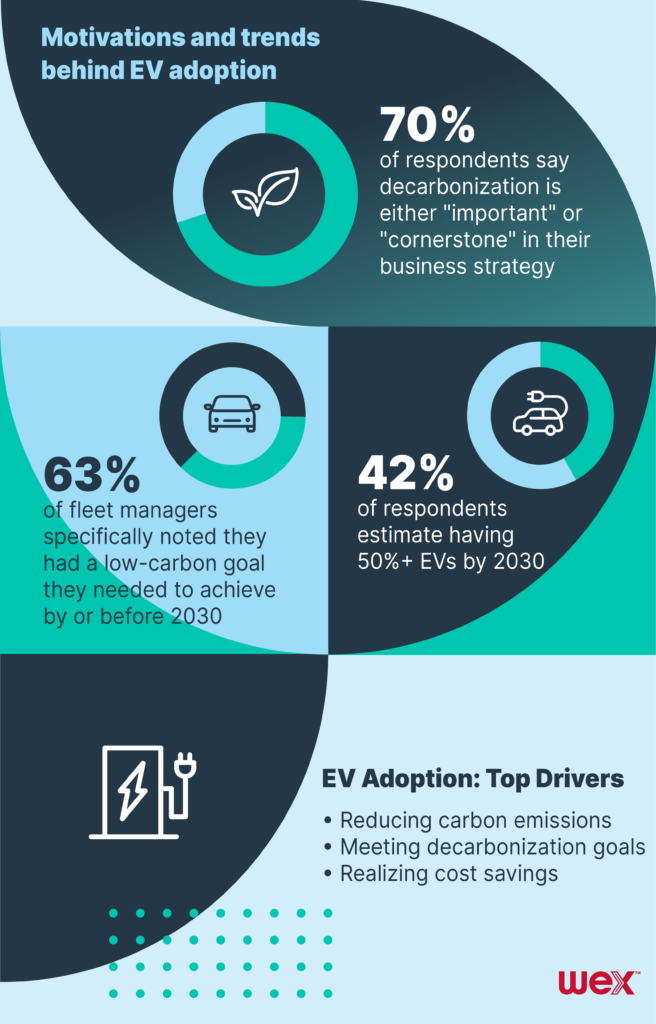
Seventy percent of respondents say decarbonization is an “important” or “cornerstone” component of their business strategy, while only 3% are not considering decarbonization at all. This underscores the powerful role of decarbonization. When businesses strategize cost savings, sustainability, and brand image, decarbonization is now part of the equation.
A 2022 McKinsey & Company article discussed how the net-zero transition could lead to the largest transformation of the industrial sector since the beginning of the Industrial Revolution:
“To reach net zero by 2050, about $275 trillion in cumulative spending on low-emissions assets will be required over the next 30 years.”
That spending will reap benefits as decarbonization presents businesses with a significant opportunity to increase annual sales. This will take place as both capital and customer demand shift toward a low-carbon economy. Failure to decarbonize, however, could risk businesses up to 20% in profit by 2030. Aware of this, they’re restructuring their business plans to include decarbonization.
Operations become complicated when business owners and fleet managers have to account for two very different vehicle models. This complexity means overseeing two routing systems, two fueling plans, and vastly different maintenance schedules.
Even when faced with electrification challenges, including high upfront costs (64%), 50% of surveyed organizations went ahead and invested in a charging infrastructure for their plant. The analysis is future forward: Invest in infrastructure now. Then you can realize future rewards as your hybrid and electric vehicles will ultimately save you money down the line.
Most organizations (78%) have on-site charging, but en route and at-home charging are also common. Having the same payment program for both ICE and EVs is a top priority. When adopting electric vehicles into your fleet, the question quickly becomes, “How do I manage this alternative form of fueling?” Finding a fuel card partner that can integrate electric vehicle charging into an existing fuel card program will be optimal. It will allow for a streamlined, manageable, mixed-energy fleet system.
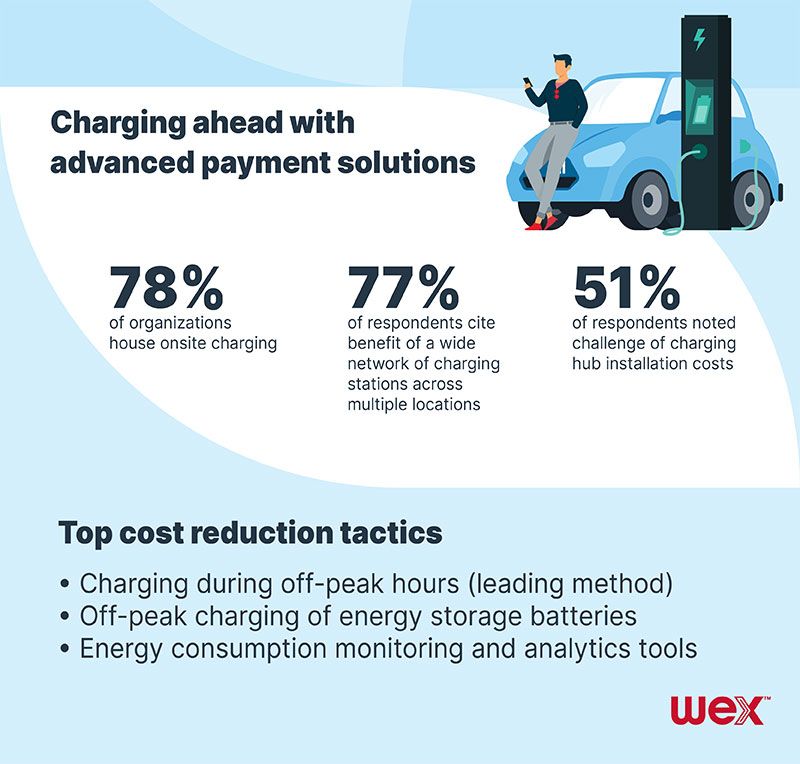
For business owners and fleet managers looking to build a mixed-energy fleet some aspects of the transition may feel challenging. These include route planning, data analysis, and integrating two unique vehicle demands into one system.
More than half of Frost & Sullivan’s research, sponsored by WEX, reports survey respondents (58%) struggle with route planning. This struggle involves planning fueling station stops for two different types of fuel, presenting a unique challenge.
Range is also a factor when route planning. Data and reporting for a mixed-energy fleet also appears to be a challenge. Forty-nine percent of survey respondents struggled to collect data for their ICE and EV fleets.
Technology was also cited as a top challenge. Forty percent of respondents faced difficulty integrating fleet management software for both ICE vehicles and EVs. The best fuel card programs will offer a package deal. This includes routing, data analysis, and technology solutions that effortlessly blend the core components of a mixed-energy fleet.
It’s common knowledge that Europe is ahead of the U.S. in EV adoption. The statistical difference is striking. There were reportedly approximately 4.4 million EVs in Europe in 2022 but only 2.1 million in the U.S. The difference is even greater for plug-in hybrids. Here’s a look at how the 110 surveyed organizations in the United States reported navigating the transition to mixed-energy fleets:
In the U.S., 82% of organizations say cost savings is the main reason behind their decarbonization efforts. This makes the nation one of the most cost-driven markets surveyed. Government support and alignment at the CEO/board level are also top considerations, each cited by 76% of respondents. Cost savings can be found in fuel as well as reduced maintenance, making EV adoption a wise business decision.
Globally, the effect of decarbonization on EV decision-making was much higher according to Frost & Sullivan’s research. However, in the U.S., 54% of organizations have set clear decarbonization targets.
Larger fleets with 100 to 499 vehicles are particularly focused on setting these targets. This is likely due to their higher carbon footprint, complex operations, and easier access to capital.
U.S. fleets face significant challenges with proprietary charging hubs, including compatibility issues, limited access, and higher costs. Sixty-five percent of U.S. operators cited depot installation costs as the biggest hurdle. This refers to installing proprietary onsite charging stations– the highest among all markets. While the U.S. government has made great strides in building up a charging infrastructure across its roads and highways, there are still challenges to overcome.
According to Pew Research Center, the number of EV charging stations in the U.S. has more than doubled since 2020, which is great news. In December 2020, the Department of Energy reported that the number had grown to nearly 29,000 public charging stations across the country. In 2024, that number increased to more than 183,000 stations.
While more than 95% of the American public now lives in a county that has at least one public EV charging station, those in rural areas have limited access. Sixty percent of urban residents live less than a mile from the nearest public charging station. This is compared to only 41% of those in the suburbs who do. The number decreases in rural areas. Just 17% of those in rural areas have the same access to public EV charging as their suburban peers. While the U.S. is making strides in building out its infrastructure, there is still much work to be done to satisfy the needs of the majority of drivers.
American operators see real benefits in en route and at-home charging. However, 76% highlight the cost savings of at-home charging, with similar views in Australia (86%). For en route charging, convenience is key – 77% of U.S. operators value it for allowing employees to charge on the go, compared to 74% in the United Kingdom.
U.S. businesses understand that the most cost-effective way to charge their commercial EVs is by equipping their staff with at-home charging stations, which optimizes every aspect of the charging process while simultaneously saving the business money on the charge itself.
Integrating software for both ICE vehicles and EVs is a major challenge for 49% of U.S. operators, similar to those in Germany (55%) and Australia (50%). As adoption in the U.S. grows, it’s likely the technology will develop in tandem. Finding a fuel card partner that will grow their EV solutions alongside your EV adoption will be a great first step when building your mixed-energy fleet.
Because of the challenges businesses face integrating ICE vehicles and EVs on a technical level, 55% of U.S. operators prioritize finding a fuel card that works seamlessly with their existing fleet management systems – more than in any other market. They also want a fuel card they use across both fuel and charging stations, with 59% reporting this as a critical aspect – again, higher than in any other market.
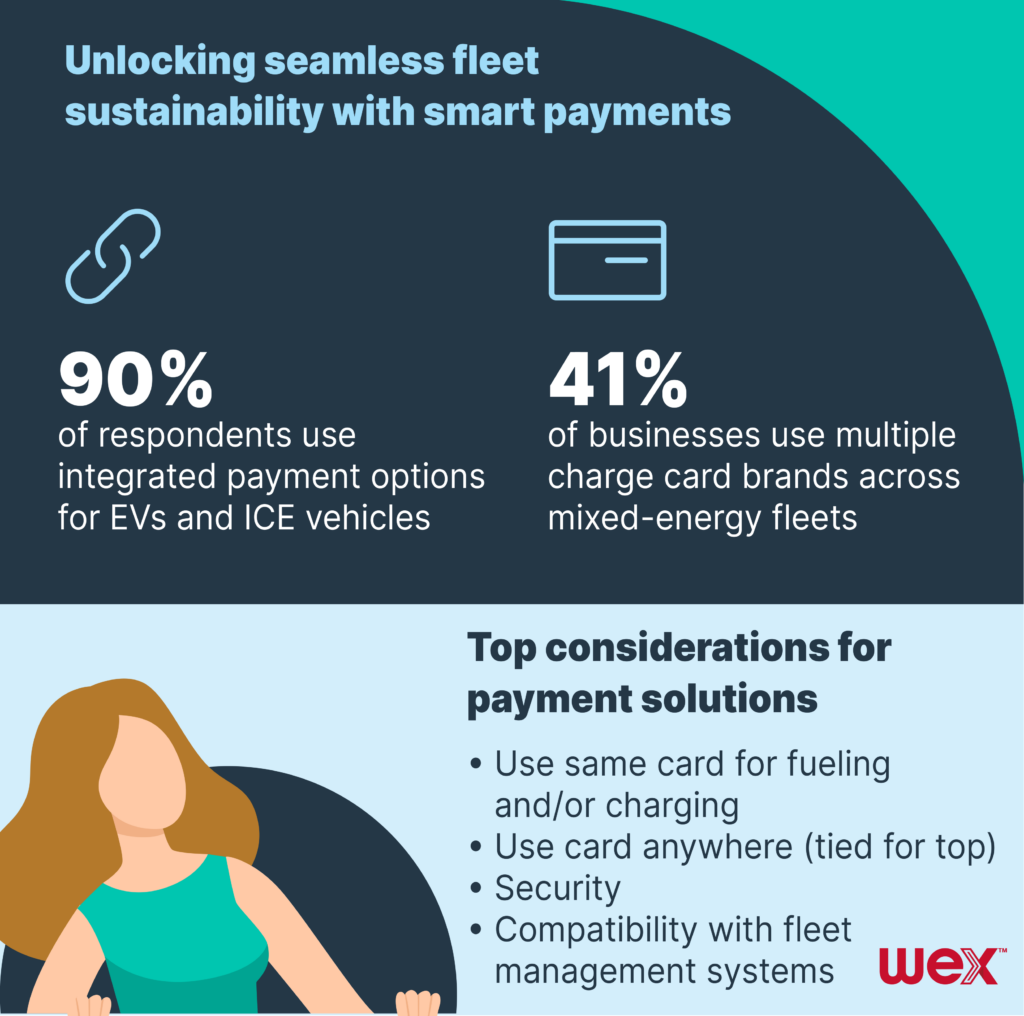
The transition to mixed-energy fleets is well underway: Nearly 20% of cars sold in the U.S. in 2023 was electric – 3.5 million higher than in 2022 – a year-over-year increase of 35% and more than six times higher than 2018 sales.
While challenges to adopting EVs persist, the benefits are clear. From WEX’s research, we can see that organizations are actively seeking solutions to build their fleet into a mix of ICE vehicles and EVs and will continue to do so for the foreseeable future.
Download a copy of the report: The Commercial EV Transition: Global Insights on a Mixed-Energy Fleet Future
WEX EV Fleet Converter helps businesses transition their fleets to electric vehicles with ease, offering tools to understand the feasibility, costs, and benefits of adopting EV.
To learn more about EV solutions and mixed fleets, visit:
To learn more about WEX, a dynamic and nimble global organization, please visit our About WEX page.
To learn more about WEX’s EV offerings visit our EV page.
All fleet cards are not the same, and different types of fuel cards suit the needs of different kinds and sizes of businesses. View WEX’s fleet card comparison chart to see which fleet fuel card is right for you.
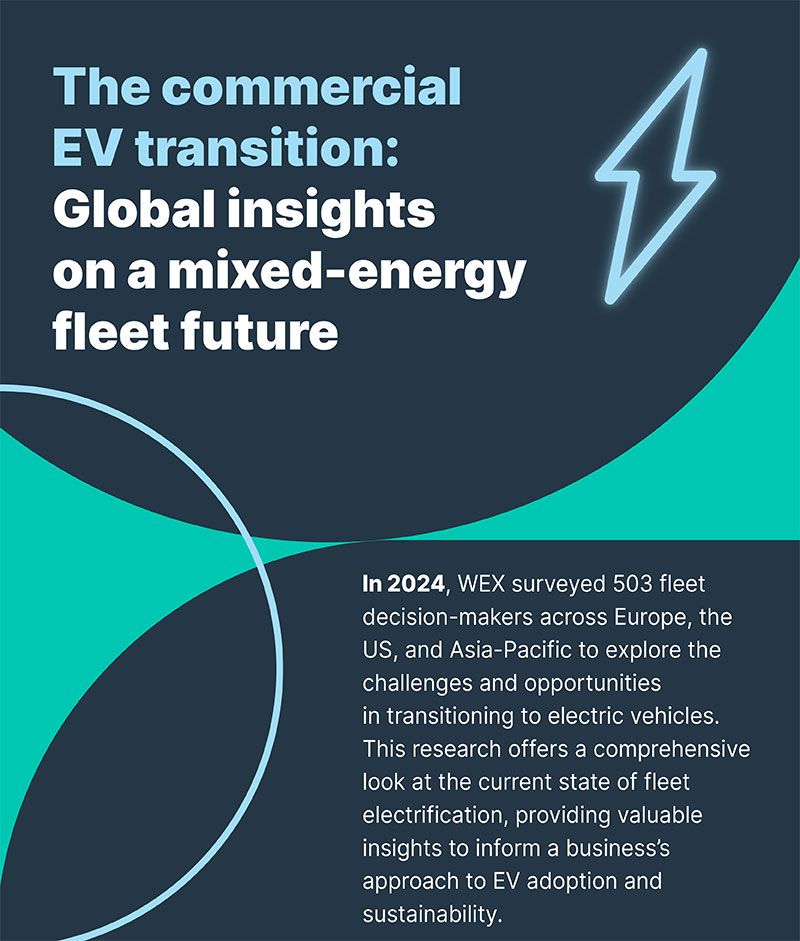
Learn more about global EV trends from recently published research conducted by Frost & Sullivan for WEX
Resources:
ESRI
Department of Energy
New York Times
McKinsey & Company
International Energy Agency
Electrify News
Pew Research Center
Fox News
Inside EVs
Subscribe to our fleet blog and follow us on social media to receive all our fuel and energy industry insights.